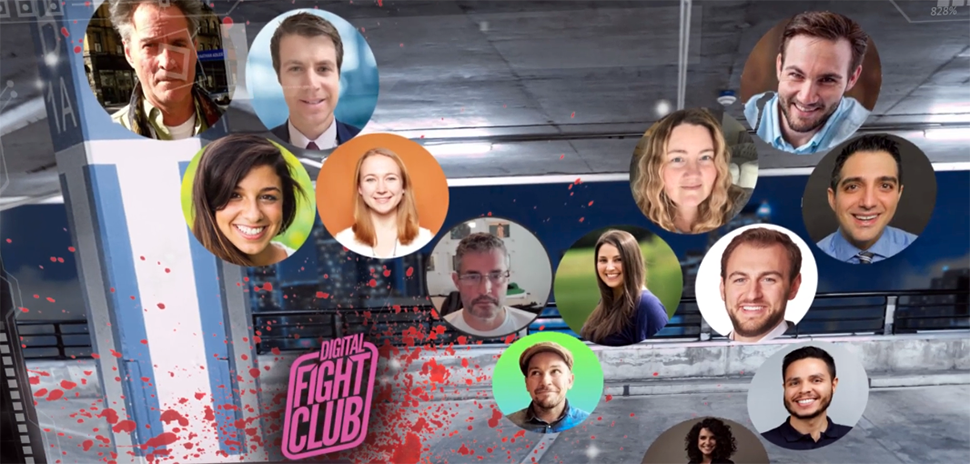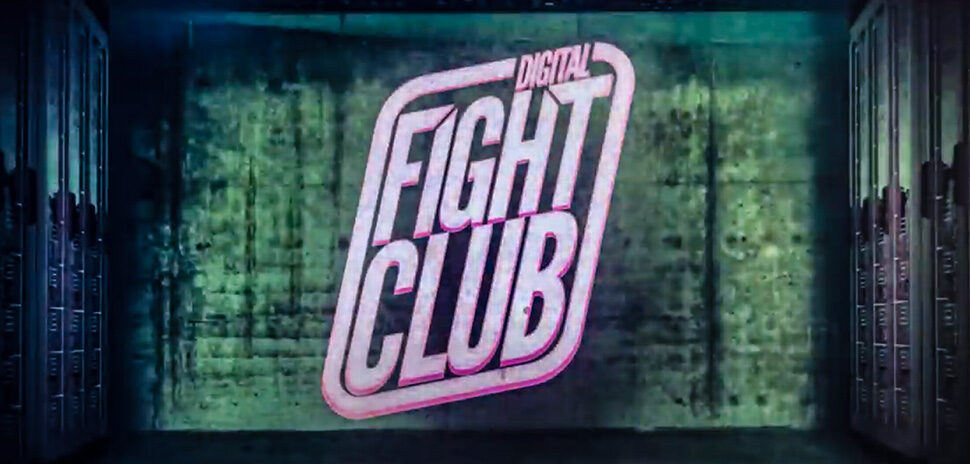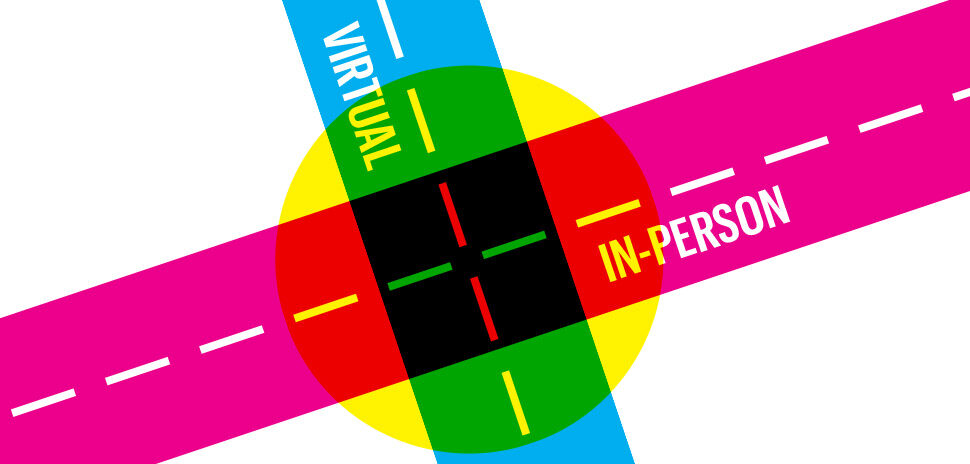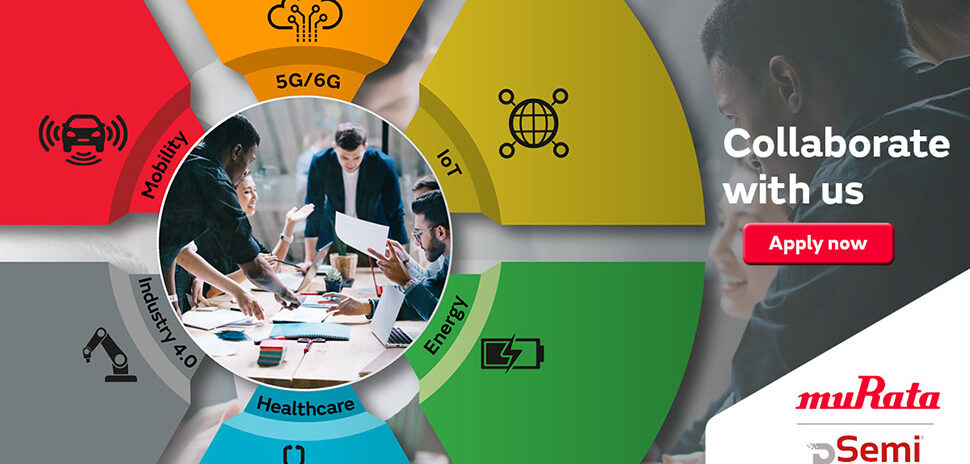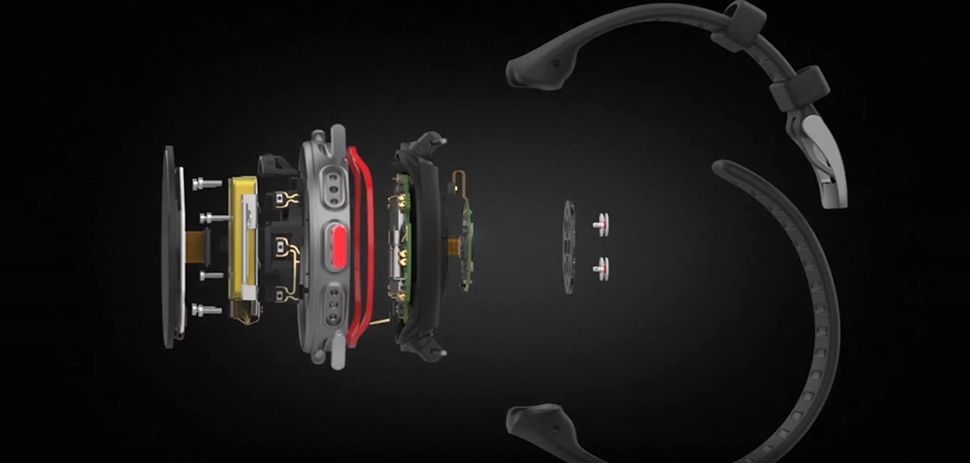Digital Fight Club is infamous in the Dallas tech scene for its raucous crowd, no-holds-barred commentary, and big-name guests. The annual event pits experts against each other in their respective industries to “battle it out” on hot topics. The cocktails flow, the audience rallies behind their favorites, and (sometimes) subtle digs are thrown. Maybe we’re biased, but it’s perennially a favorite of the year.
So in a time plagued by Zoom panels and not-so-interactive conferences, the team behind Digital Fight Club knew it had to find a way to bring the essence of its traditionally rowdy, in-person evenings to the screen. Founder Michael Pratt, who “doesn’t do boring,” teamed up with Accenture and local startup Preciate to take the event to a new virtual level.
On June 9, the CEOs, technologists, entrepreneurs, and investors who attended Digital Fight Club: Dallas 2021 were able to participate in just as much of the action as they normally would in person. This year’s event was produced in partnership with Dallas Virtual Events, a studio in Deep Ellum from J. Damany Daniel and his company, The Event Nerd.
The night began with a virtual VIP reception on Preciate, a Dallas-based digital socializing platform. Arrow keys allowed attendees to bop around and converse with familiar faces or potential new LinkedIn connections, similar to a bar setting.
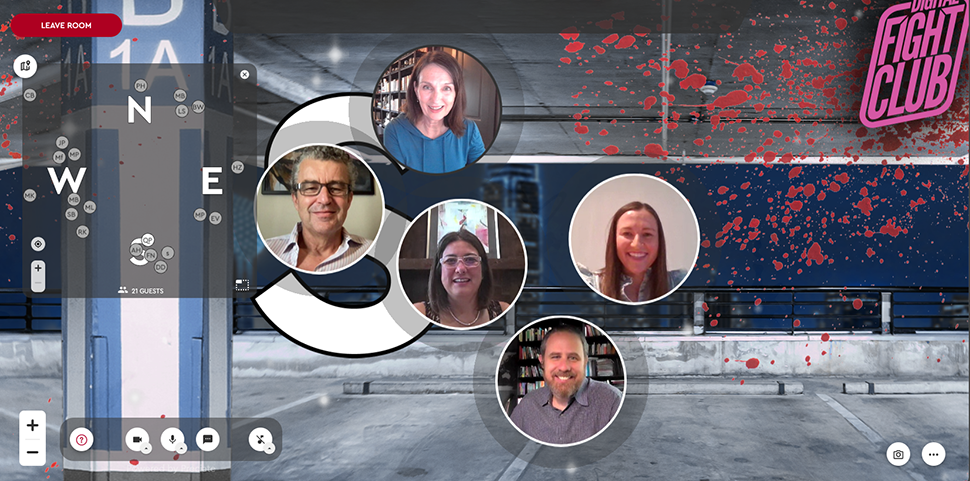
On the Preciate platform, virtual VIPs could move around to “work the room,” take photo booth group selfies, and cluster for conversation.
From there guests moved over to DFC’s own app, powered by Accenture, which was built with the help of a team overseas. A DJ played techno music while the audience grabbed a cocktail and settled in, or the fighters prepared.
In the interim, attendees could hop onto virtual “couches” that allowed up to eight people to watch, heckle, and react together as the debates unfolded. After a slight technical hiccup, guests could use the function properly and join their friends’ private couches or jump to a random one.
The couch setting was totally optional, but as DFC unfolded, the audience members seemed to grasp the new concept. Messages of “Anyone got a couch I can join?” or “Who wants to come to our couch?” filled the public group chat.
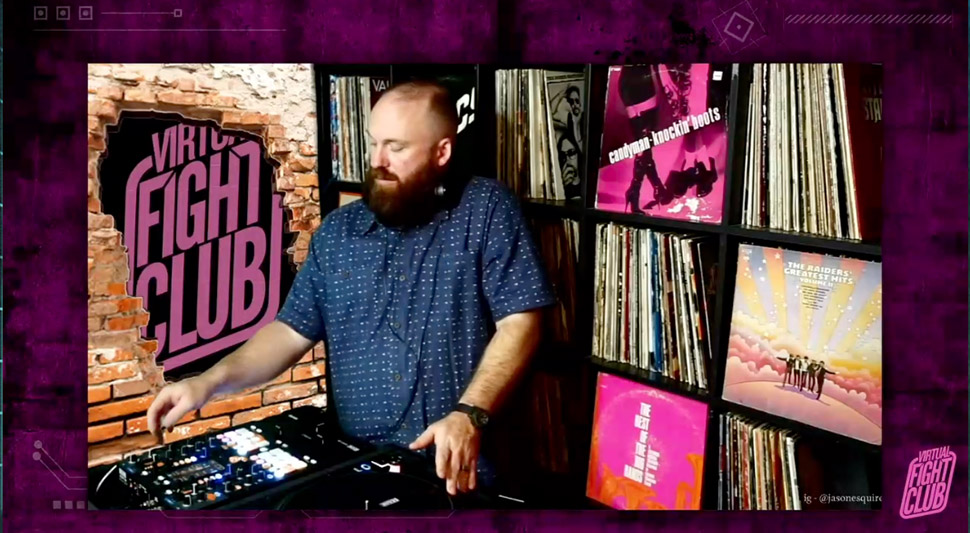
The audience found themselves grooving with the DJ a little longer than expected—the DFC team experienced some difficulties with the tech platform that resulted in a 30-minute delay.
Founder Pratt kept spirits up with his usual quick-witted commentary and emcee-ing. Citing Elon Musk Starship launches: “We’re all into fast failure … and, let’s pretend like this never happened.”
As Pratt put it: “The rest of the event [will be] smooth as a baby’s bottom.”
The original Digital Fight Club was created by Digital Dallas, an organization Pratt founded some 10 years ago to bolster the entrepreneurial community in North Texas. Fight Club itself was born from beers between Pratt, who’s also the CEO of Panamplify, and Andrew Hopkins, the former managing director of Industry X.0 at Accenture. The duo came to the notion that panels are boring even before COVID—rather, experts should be matched in a high-energy, technology-driven debate.
How DFC works
Typically, two designated “fighters” sit face-to-face in a makeshift boxing ring for five separate 10-minute rounds. Each round hosts a niche topic relating to the fighters’ areas of expertise, and it’s up to them to defend their stance.
Both fighters get a 45-second opening and a 30-second rebuttal. Then, two questions can be asked among the five referees with a 15-second response from each fighter. The refs and the audience then cast their votes via mobile device.
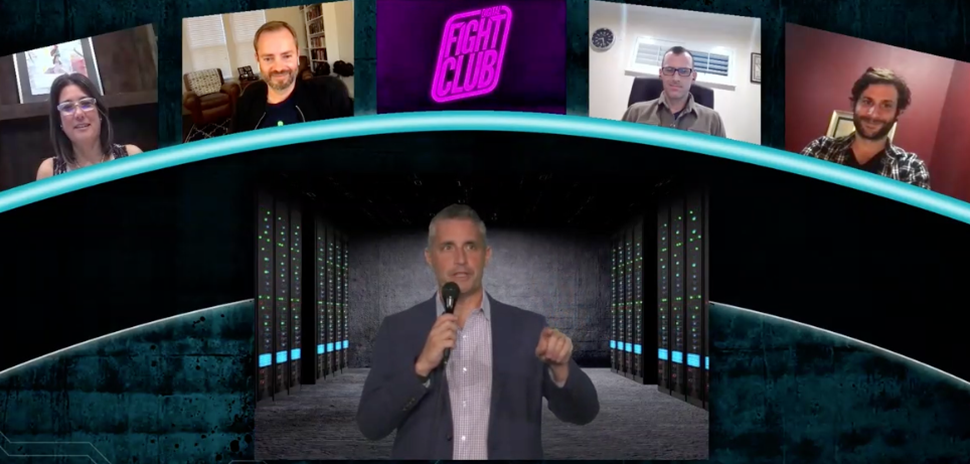
The virtual version of DFC was kept largely the same once the fights got rolling. Each participant dialed in from their own home or office to follow the same setup, just over the computer. Pratt monitored time.
Audience members stayed engaged as the platform allowed them to throw virtual tomatoes or claps at the fighters, depending on how they felt about what was being said. At the end of each fight, voting took place inside the platform (and it worked seamlessly after a slight snafu).
And when it was all over—way past its initial ending time, but guests hung in there—Pratt invited everyone back to the Preciate platform to discuss what went down and continue networking.
If you couldn’t tune in, here’s your quick rundown of who took home the belts.
Future of Retail: Distribution, Shopping, and Stores
Fight 1 pitted Roee Adler, CEO and co-founder of Santa, against Steve Dennis, president of SageBerry.
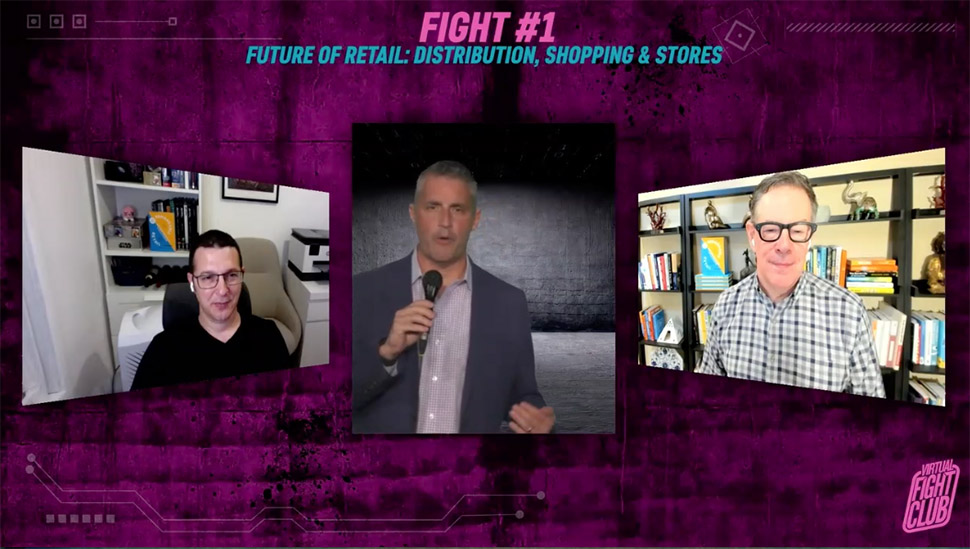
Dennis argued that the idea physical retail is dying is ridiculous: He thinks “the future of retail very much involves people continuing to go into physical stores.” He pointed to digitally native brands like Warby Parker, which is opening up more brick and mortar locations, to show that the customer is the channel, and “we have to embrace the blur that is modern shopping.” Digital drives physical and vice versa.
Adler’s stance was that visiting stores will start to become a smaller percentage of our total shopping time. But, he also thinks there’s “no romance” to the ecommerce experience, like being able to touch and feel a product before pulling out your credit card. He sees a vision of being able to have something closer to a “full service store experience” that comes to your home whenever you need it.
Winner: Steve Dennis
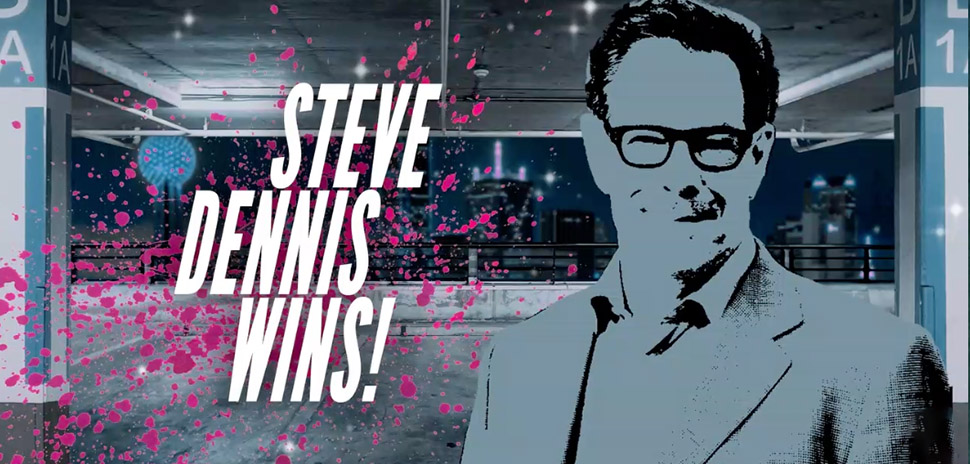
Future of Work: Remote Work, Culture, and Technology
Fight 2 was between Nick Clark, CEO of Common Desk, and Sam Bloom, CEO of Camelot Strategic Marketing & Media.
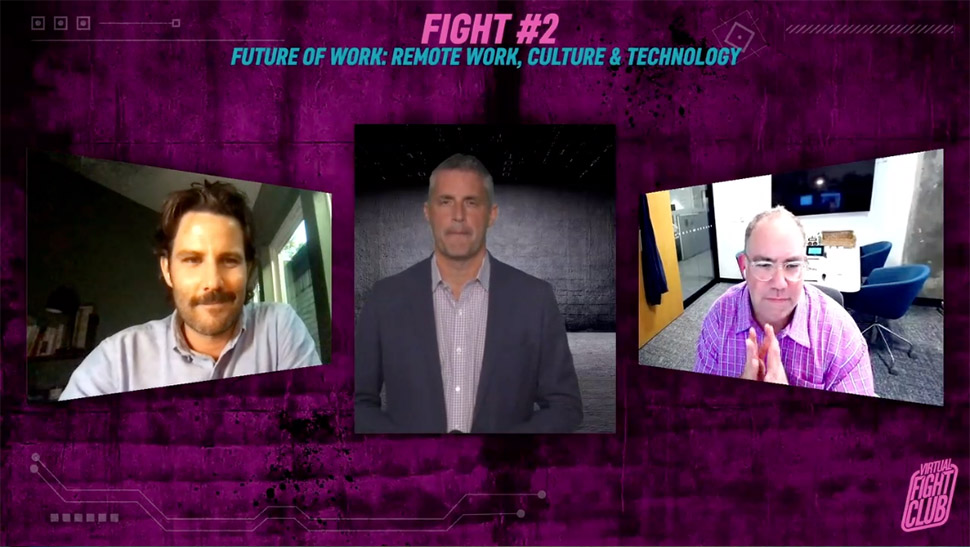
Despite the pandemic, Clark doesn’t predict physical offices will go away anytime soon. In fact, he’s been seeing people coming back to his coworking spaces in droves. But, the future of office is going to look very different. Clark argued that employees are wanting great experiences that draw them into the office. He thinks Class A will get more experiential so people have a reason to leave their house.
Bloom advocated for all-remote working. As one of the most studied pieces of business academia, he thinks remote employees have benefits that companies are now noticing. He lists: better performance, more balanced work/life, wider access to talent, better impact on the environment, improved inclusivity and retention, and real cost savings. “Clearly,” he says, “this is a trend that’s here to stay.”
Winner: Nick Clark
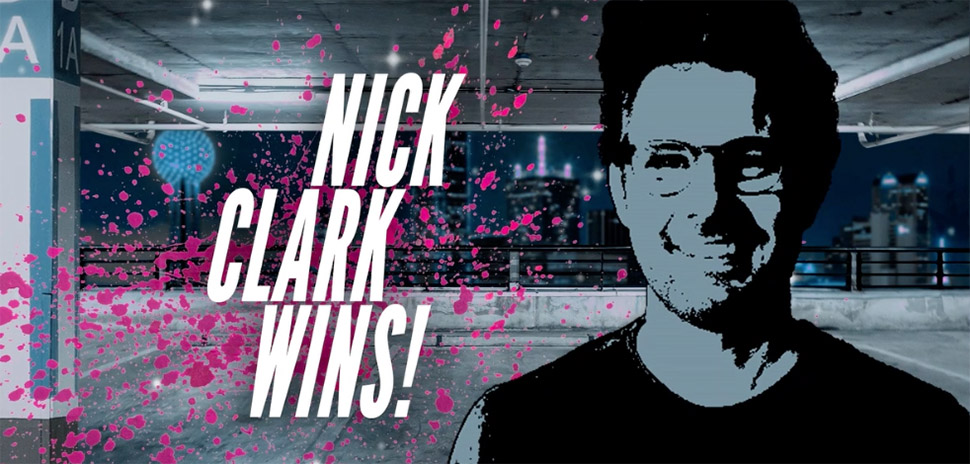
Post-Pandemic Collective Displacement: How brands engage with consumers
Fight 3 featured Pedro Lerma, CEO of LERMA, and Matt Powell, CEO of Moroch.
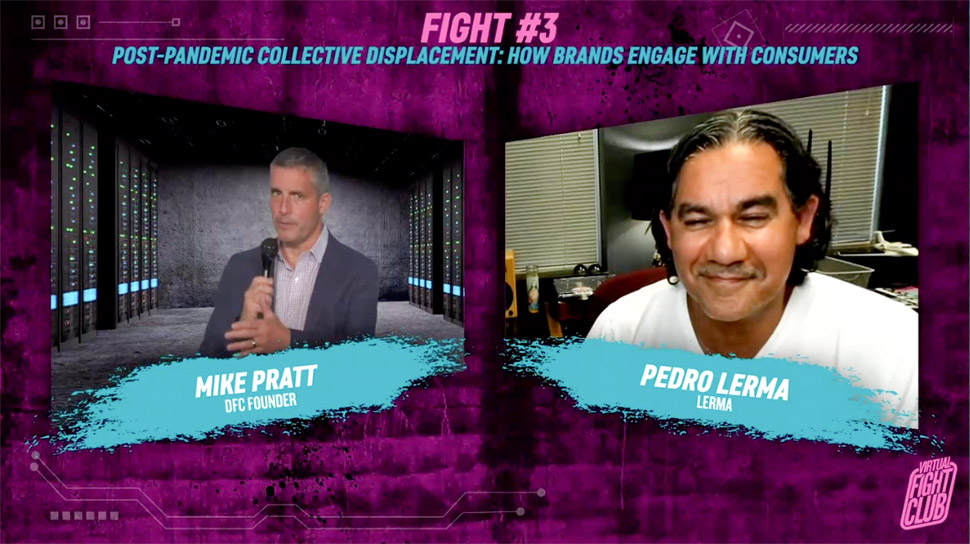
Powell started the debate by saying that consumer patterns are changing, especially as the majority of Americans get vaccinated. In terms of the three biggest trending areas—place (where people work/live), activity (entertainment and sports), and community (sharing things together)—he thinks place is not going to revert back to normal and community is.
Powell argues that “everything we knew about the customer is gone.” He says brands have to understand that consumers have reprioritized their values dramatically, and old patterns, like the way information is gathered, have been completely disrupted. He thinks brands have to redefine their relationships with their customers now and find the most efficient, profitable ways to connect.
Winner: Pedro Lerma
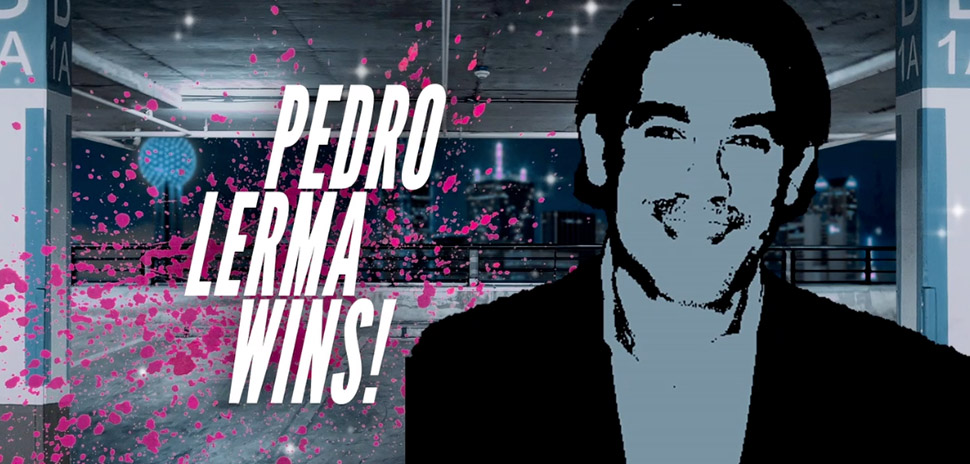
Health Care: Remote Care and Innovation
Lastly, Fight 4 brought Hubert Zajicek, CEO of Health Wildcatters, and Lyndsey Harper, CEO of Rosy, to the virtual stage.
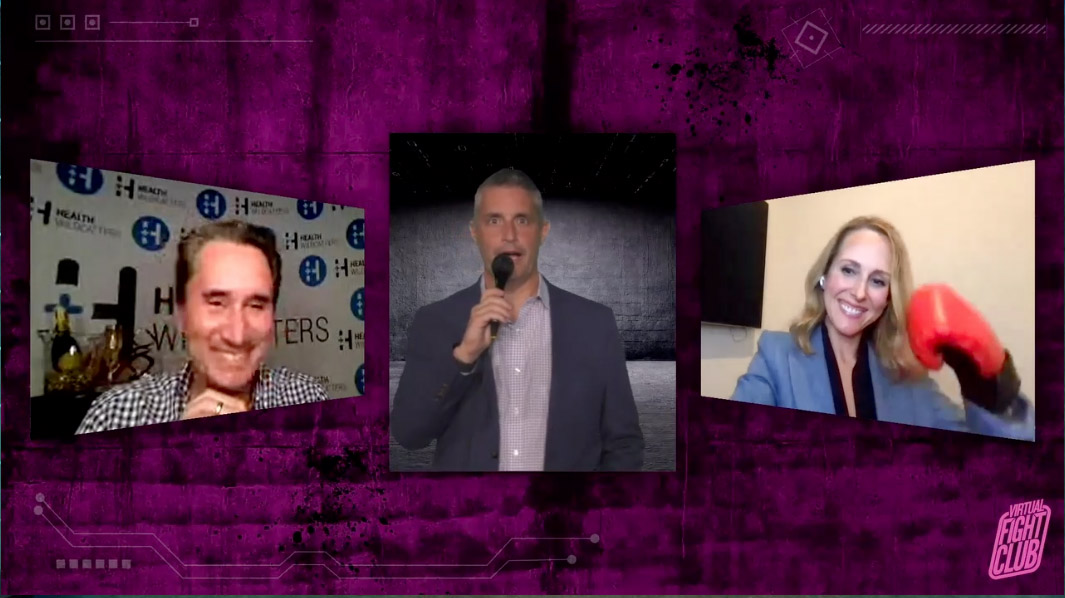
Harper says when a powerful institution is tone deaf and too narrowly focused on its own internal standards and endeavors, “it will inevitably fail.” Too often, she says, healthcare consumers are too scared to interact with the medical community that doesn’t listen to them or stick up for them. Sometimes, there’s even an increased morbidity and mortality due to healthcare’s lack of progress.
Zajicek thinks that “the patient has run out of patience”—the healthcare consumer has arrived. He thinks healthcare organizations have to remain compliant to regulators like HIPPA and the FDA, while at the same time acting like a startup to innovate quickly. He thinks consumer-listening startups are very smart and important, as they will bring in a new age for healthcare.
Winner: Lyndsey Harper
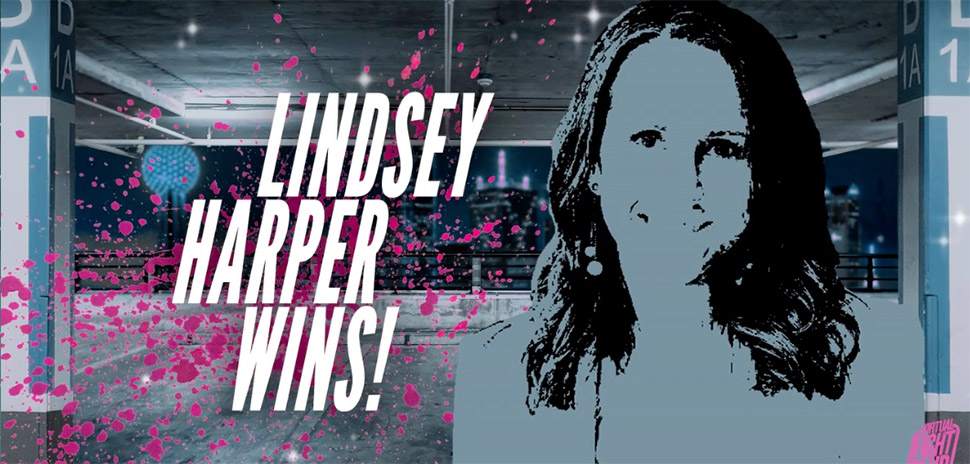
![]()
Get on the list.
Dallas Innovates, every day.
Sign up to keep your eye on what’s new and next in Dallas-Fort Worth, every day.










